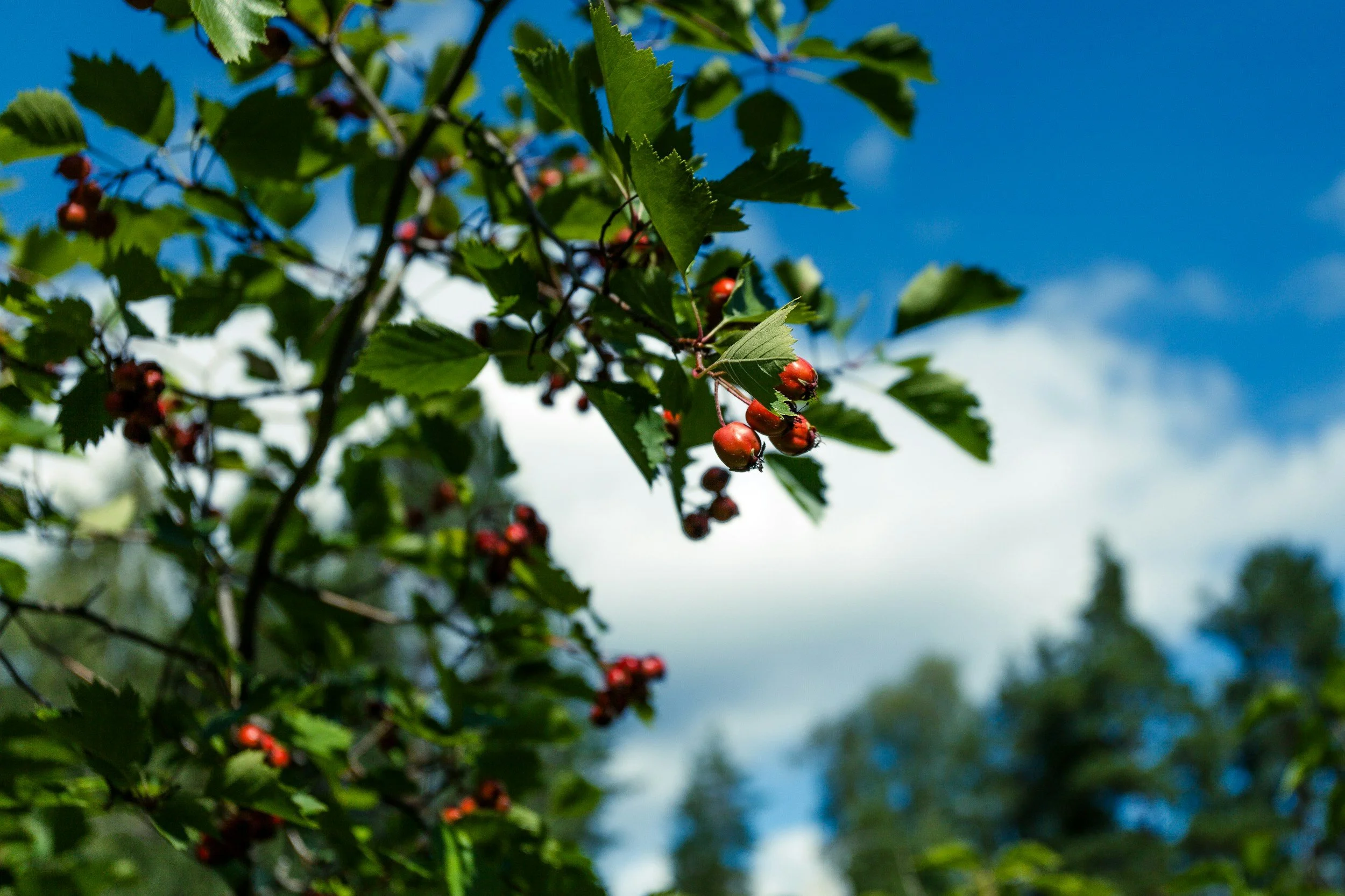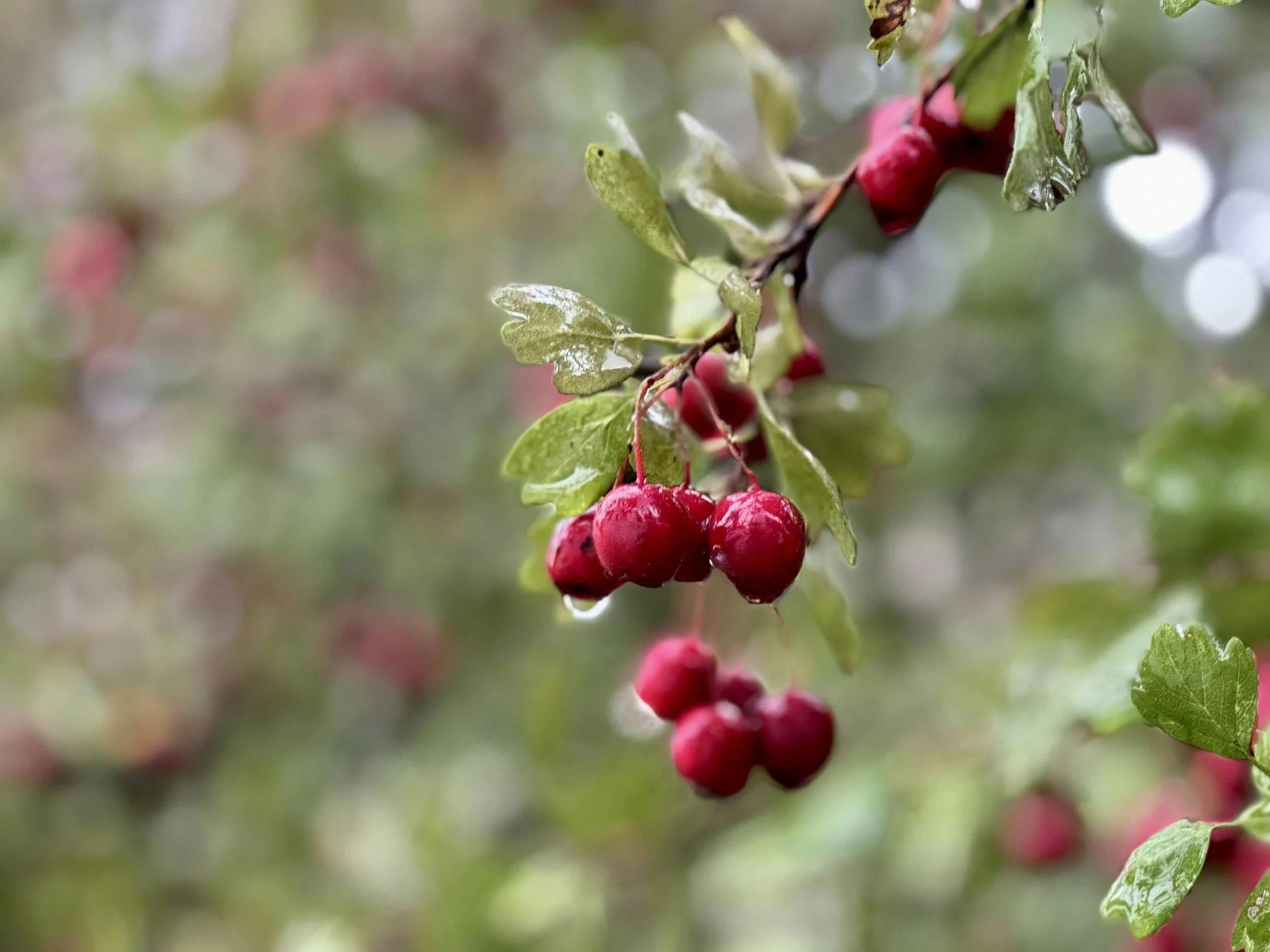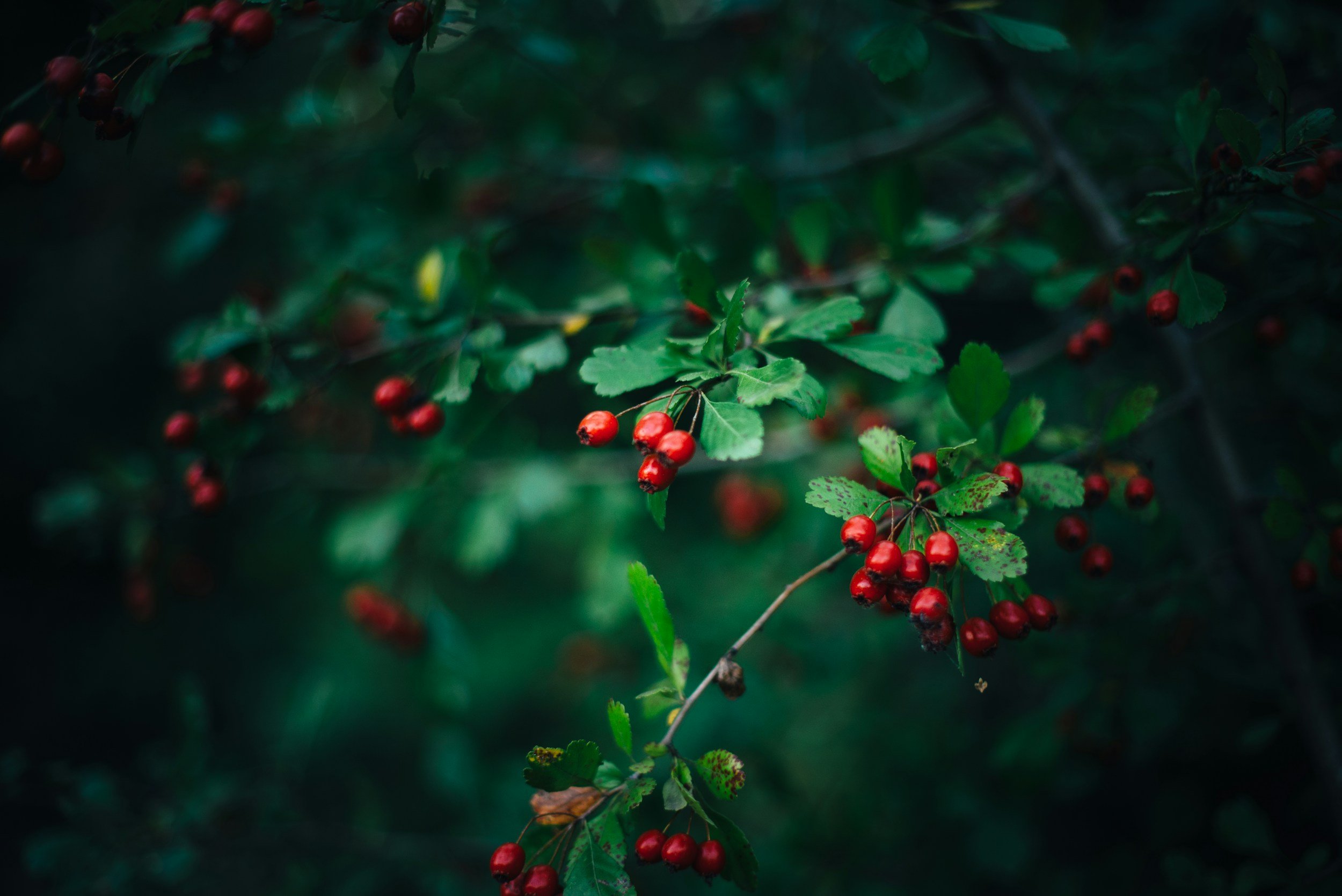
Hawthorn
Hawthorn (Crataegus spp)
Plant family
Rosaceae
Other significant names
Haw
May
Maythorn
Mayflower
May blossom
Whitethorn
Parts used
Flos (Flower)
Folia (Leaves)
Fructus (Fruit)
Common prescription forms
Tinctures
Hawthorn (Crataegus spp.) – Clinical Snapshot
Primary Actions
Cardiotonic
Positive inotropic
Negative chronotropic
Vasodilator
Relaxant
Anxiolytic
Hypotensive
Diuretic
Astringent
Primary Indications
Anxiety
High/low blood pressure
Mild to moderate chronic heart failure
Intermittent claudication
Palpitations
Atherosclerosis (prophylactic for diabetics)
Congestive heart disease
Dyspnoea
Cystitis
Prostatitis
Dysmenorrhea
Tinnitus
⚠️Cautions / Safety⚠️
No known contraindications
Safe to use during pregnancy and lactation
Professional supervision is recommended when used with other heart medications
Possible synergistic effects with Convallaria, digoxin, and antihypertensives
Oligomeric Proanthocyanidins (OPCs)
Action: Antioxidant, vasodilatory, capillary protective
Use: OPCs are potent free radical scavengers that enhance peripheral circulation, improve blood flow to the heart, and reduce vascular fragility. They support the integrity of arteries and veins, making hawthorn useful in venous insufficiency, varicose veins, and capillary fragility.
Crataegus spp.
Phytochemistry and Pharmacology
Triterpenoids
Includes: Ursolic acid, oleanolic acid
Action: Anti-inflammatory, cardioprotective, antimicrobial
Use: These compounds help reduce inflammation in blood vessels and heart tissue and may contribute to hawthorn’s mild antimicrobial properties. They also enhance their protective effect on cardiac muscle.
Phenolic Acids
Includes: Caffeic acid, chlorogenic acid
Action: Antioxidant, hepatoprotective
Use: These contribute to Hawthorn’s broad antioxidant profile, supporting the liver and metabolism, and protecting tissues from oxidative damage that contributes to cardiovascular disease.
Amines (in flowers and leaves)
Includes: Trimethylamine
Action: Hypotensive, mildly sedative
Use: Present in small quantities, these compounds may support mild blood pressure reduction and contribute to hawthorn’s reputation for helping with stress-related heart symptoms such as palpitations or nervous tension.
Flavonoids
Includes: Rutin, quercetin, hyperoside, vitexin
Action: Antioxidant, cardiotonic, anti-inflammatory, capillary stabilising
Use: Flavonoids are central to hawthorn’s reputation as a cardiovascular tonic. They strengthen blood vessel walls, improve circulation, and reduce inflammation in the cardiovascular system. They also protect the heart tissue from oxidative damage, making them valuable in long-term support for hypertension, atherosclerosis, and heart failure.
Traditional use
Hawthorn has long been revered in European folk medicine and mythology. Traditionally, the berries (haws) were used to draw out thorns or splinters, earning the plant a symbolic reputation as “draws out what is stuck” physically and emotionally. The fruits were often steeped in brandy to remedy heartbreak, grief, and emotional heaviness. Hawthorn was associated with thresholds and transformation, reflected in its historical use in rites of passage and its strong presence in hedgerows and boundaries.
Clinical description
In modern herbal medicine, Hawthorn is considered a foundational cardiovascular herb and a true trophorestorative, meaning it helps nourish, tone, and restore the structure and function of the heart and circulatory system over time.
It is indicated in cases of:
Mild to moderate hypertension or hypotension (blood pressure modulator)
Heart palpitations, arrhythmias, and early-stage heart failure
Poor cardiac output, fatigue, and age-related cardiac decline
Anxiety or grief centred in the chest
Its main active constituents include polyphenols, flavonoids (e.g. hyperoside, rutin, quercetin glycosides), and oligomeric proanthocyanidins (OPCs). These compounds contribute to Hawthorn’s positive inotropic (strengthens heart contractions) and antiarrhythmic effects, which help improve the efficiency of the heart muscle and protect against oxidative damage.
Hawthorn is also a gentle nervine, making it particularly helpful where emotional stress affects the heart—such as anxious chest tension, grief, or emotional shock. In these cases, it combines well with milky oats (Avena sativa) and Rose (Rosa spp.) to gently hold the heart in moments of loss or overwhelm.
Hawthorn acts gradually and is often used long-term to support cardiovascular tone, circulatory resilience, and emotional steadiness.
Cultivation/harvesting
Hawthorn is a hardy, slow-growing deciduous tree or shrub commonly found in the UK and Europe in hedgerows, meadows, and woodland edges. It thrives in various soils and provides excellent wildlife support, particularly for pollinators and birds.
Flowers and young leaves: Harvest in early spring when about half the flower buds are open, ideally in dry weather. Gather top leaves and flowering tops together, as they are often used synergistically in tinctures and teas.
Fruits (haws): Harvest in late autumn when they are fully ripe and soft. They may be slightly wrinkled and deep red. These are typically used in decoctions, syrups, jams, and brandy-based remedies.
Dry flowers and leaves gently in a well-ventilated, shaded area and store in airtight jars. Depending on preparation needs, berries can be dried or used fresh.
Key Botanical Features of Hawthorn (Crataegus spp.)
Growth
Type: Deciduous tree or shrub.
Size: Typically grows 3–10 meters (10–33 feet) tall, depending on species.
Stem/Bark:
Bark is grey to brown, often rough and fissured with age.
Many species have sharp thorns along the branches, which can be 1–5 cm (0.4–2 inches) long.
Leaves
Type: Simple, alternate.
Shape: Lobed or serrated (varies by species), sometimes profoundly divided.
Size: Typically 2–7 cm (0.8–2.8 inches) long.
Texture: Thin, sometimes slightly glossy.
Colour: Dark green in summer, turning yellow, orange, or red in autumn.
Flowers
Type: Small, five-petaled flowers, characteristic of the Rosaceae family.
Size: 1–2 cm (0.4–0.8 inches) in diameter.
Colour: Typically white or pale pink, sometimes with darker pink or red markings.
Flower Arrangement: Borne in dense clusters (corymbs or umbels).
Blooming Period: Spring to early summer (typically April to June).
Scent: Flowers often have a strong, musky fragrance.
Pollination: Attracts bees, butterflies, and other pollinators.
Fruits (Haws)
Type: Small, berry-like pomes (similar to apples).
Size: 5–20 mm (0.2–0.8 inches) in diameter.
Colour: Bright red, orange, yellow, or even black, depending on species.
Texture: Fleshy with a tough skin, containing 1–5 tiny seeds.
Ripening Period: Late summer to autumn.
Edibility: Edible, often used in jams, jellies, teas, and herbal medicine.
Roots
Type: Deep, fibrous root system, helping the plant to be drought-resistant.
Function: Provides firm anchorage and enables survival in various soil types.
Habitat & Growth Conditions
Climate: Thrives in temperate regions and tolerates cold winters.
Soil: Prefers well-drained loamy soil, but can grow in various soil types, including clay and sandy soils.
Sunlight: Requires full sun to partial shade.
Distribution: Native to Europe, North America, and Asia, commonly found in hedgerows, woodlands, fields, and along roadsides.
Sustainability/conservation
Abundant and common shrub.
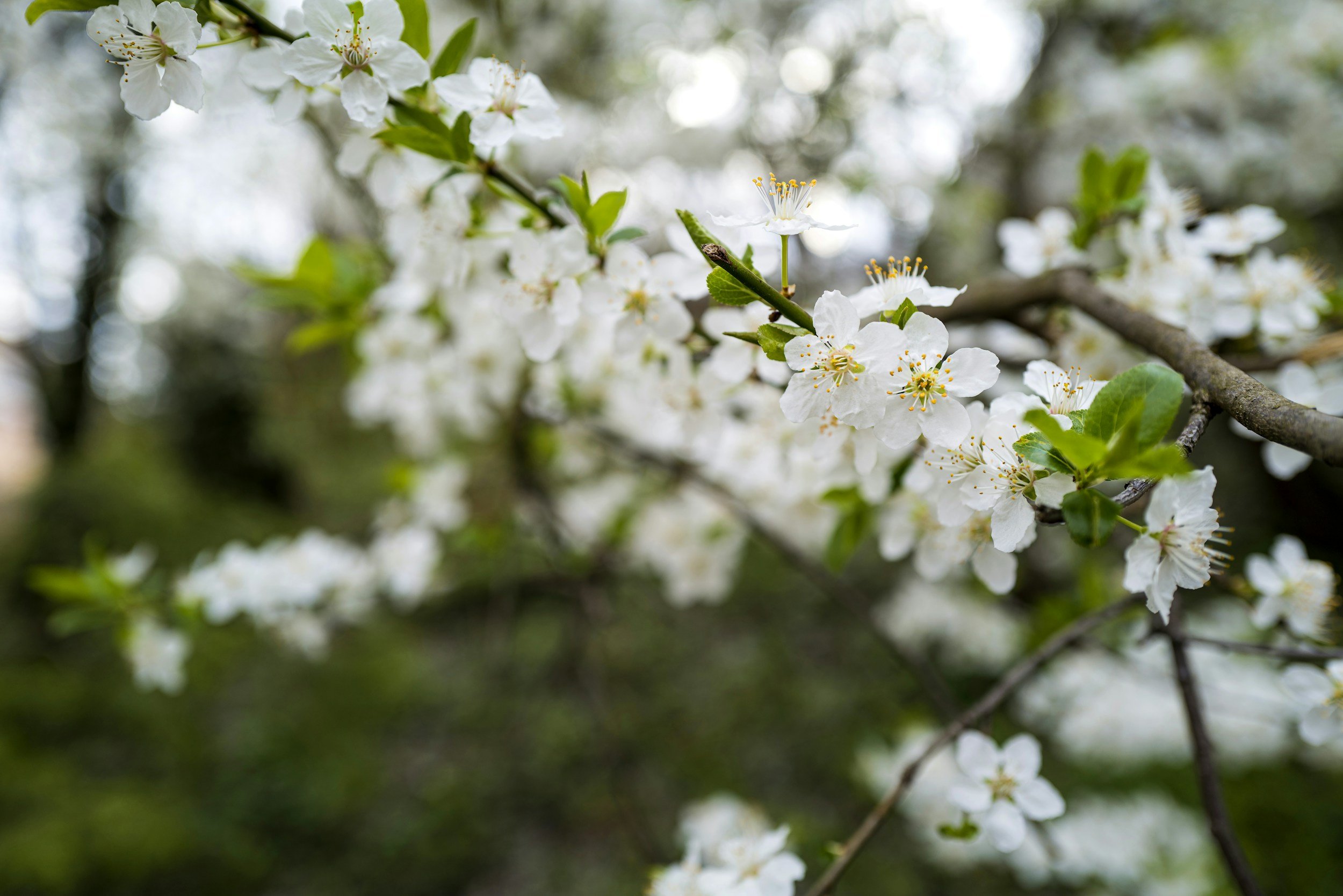
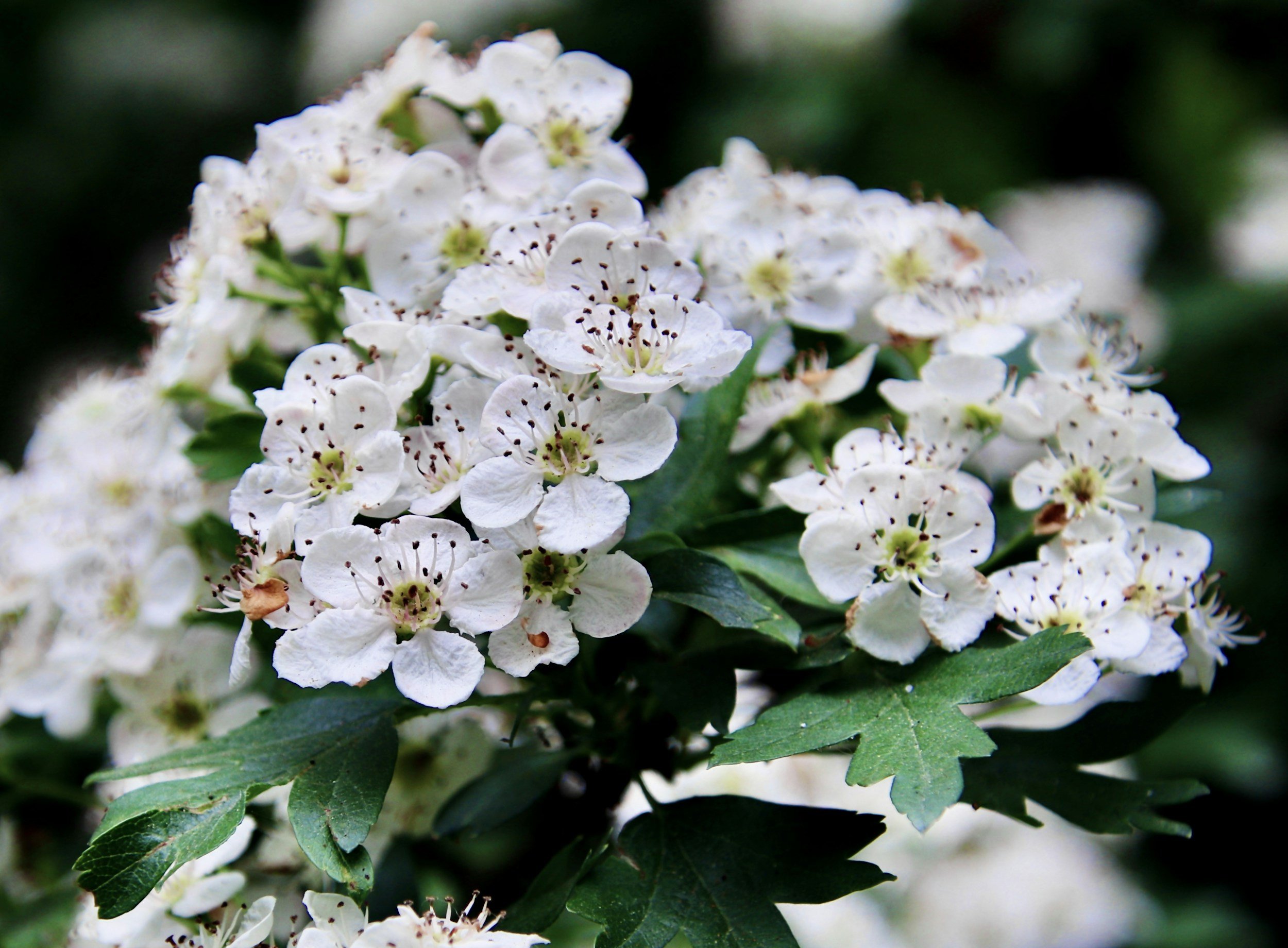

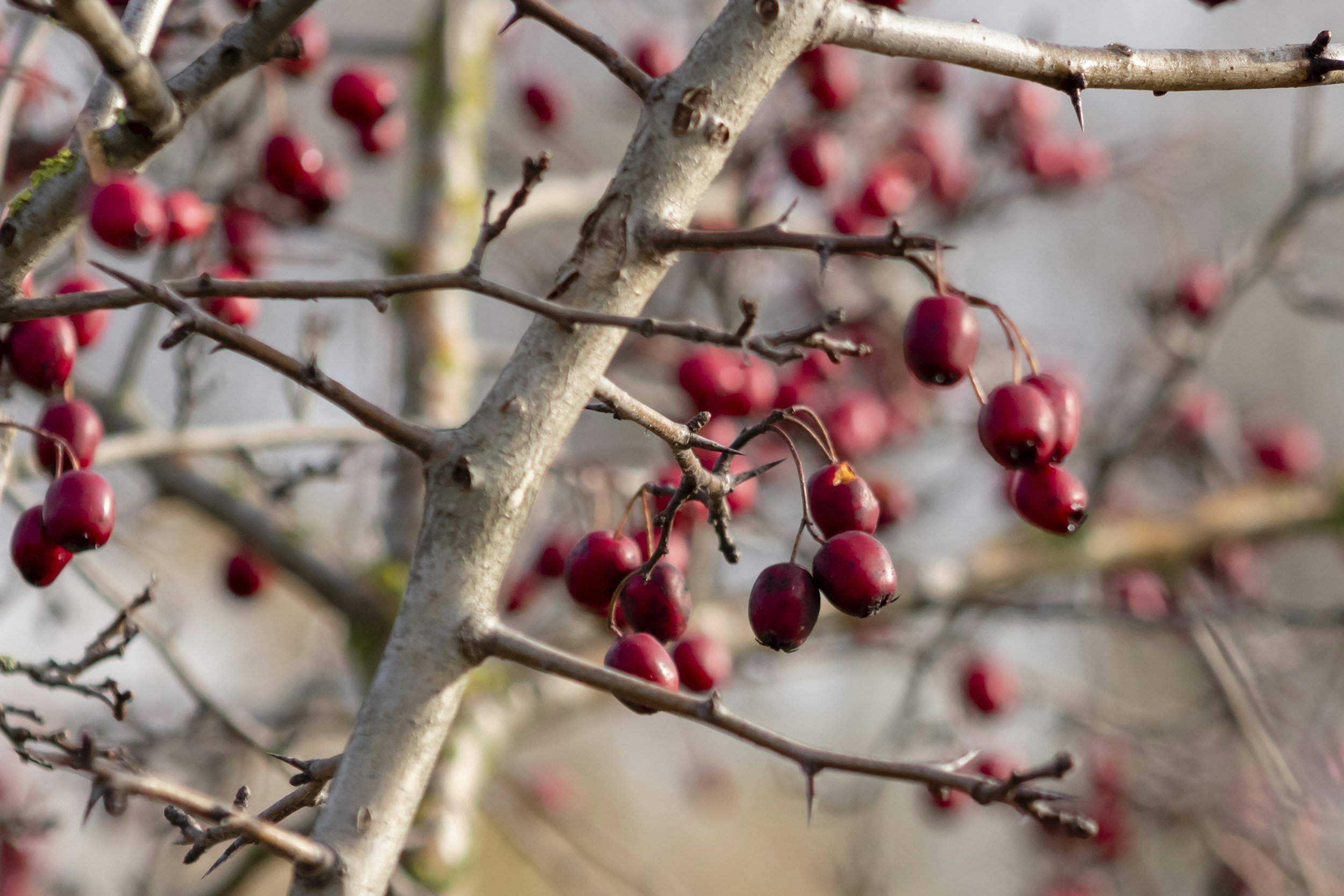
Sources
Bartram, T. (1998). Bartram’s Encyclopedia of Herbal Medicine. Constable.
Fisher, C. (2009). Materia Medica of Western Herbs, (2018 edition). Finchley Road, London. Aeon Books.
Hedley, C & Shaw, N. (2020). A herbal book of making and taking. Finchley Road, London. Aeon Books.
Hoffmann, D. (2003). Medical Herbalism: The Science and Practice of Herbal Medicine. Healing Arts Press.
McIntyre, A. (2019). The complete herbal tutor, revised and expanded edition. Finchley Road, London. Aeon Books.
Plants of the World Online | Kew Science. (n.d.). Plants of the World Online. https://powo.science.kew.org/
Disclaimer: This page is for educational purposes only. Consult a qualified medical herbalist before using herbs, especially during pregnancy, when trying to conceive, while breastfeeding, for medical conditions, or with children.
Read the full disclaimer → Medical Disclaimer.




